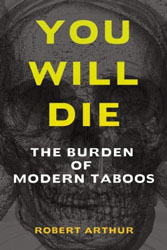Smokers Cost You Money and Other Asinine Anti-Smoking Lies
Posted: September 8th, 2011 | Filed under: drugs, tobacco | 14 Comments »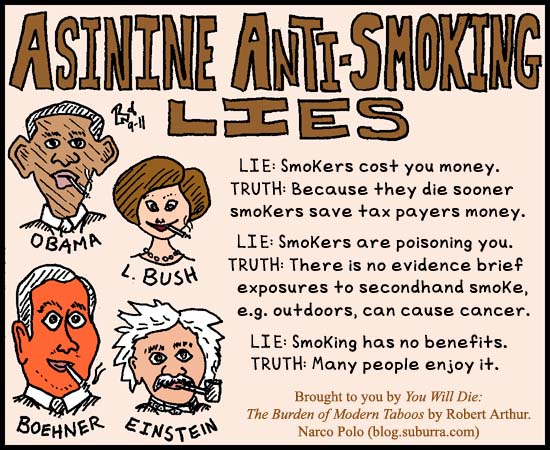
Smoking is unhealthy. Preventing juveniles from smoking and protecting non-smokers from secondhand smoke in confined spaces are reasonable responses, but the ever increasing demonization and discrimination is becoming morally repugnant. Smokers are increasingly being banned from open-air public places, denied employment, obscenely taxed, and driven underground. Politicians and bureaucrats disguise these cruel and bigoted headline-grabbing stunts as caring heroic acts by using the following lies:
Smokers Cost You Money
When calling for more punitive laws anti-smokers love to trumpet smokers’ healthcare costs. This is a canard. Non-smokers die earlier and therefore do not take advantage of Social Security, Medicare, or pension plans to the extent that non-smokers do. In addition, smokers are more likely to die of relatively quick diseases such as lung cancer, as opposed to lingering ones such as Alzheimer’s and Parkinson’s. Numerous studies have found that smokers cost tax payers substantially less than non-smokers. (9, 15) A 2008 Dutch study found that health care costs for smokers were about $326,000 from age 20 on, compared to about $417,000 for thin and healthy people. (15) A Canadian study found that in 1986 smokers added $1.4 billion to the pension system by their premature deaths. (6)
Smokers Are Poisoning You with Secondhand Smoke
Secondhand smoke in a confined space is unhealthy. However, the exaggeration of its risk is ridiculous, and the hyping of the dangers of fleeting outdoor exposure are asinine.
We know the sun causes skin cancer but people with common sense realize that does not mean walking down the street will give you cancer. We know being obese can cause heart attacks but that does not mean eating a cheeseburger is unsafe. Yet when it comes to secondhand smoke, even our Surgeon Generals make these moronic exaggerations. (For examples see this LINK and this LINK.)

* Graph uses 20% increase in risk to spouses of smokers. (4, 14)
Many of the spouses in the above study were chronically exposed to smoke in confined spaces for decades and yet their risk is nowhere near that of smokers. As for people whose only exposure to secondhand smoke is catching the occasional whiff, there is no evidence that brief intermittent exposures to smoke cause cancer. (8) Cardiovascular disease requires years of chronic exposure as well.
Smokers Are Poisoning You with Thirdhand Smoke
Thirdhand smoke is smoke left behind on surfaces. The idea is that someone who stands next to someone who smokes will spread cancer via their clothes for the rest of the day. As one thirdhand article warns, “young children are apt to suck on a parent’s clothes.” (5)
The “science” behind thirdhand smoke dangers should repulse anyone who has a puff of integrity. This year Dr. Virender Rehan and his team of investigators directly applied known tobacco carcinogens to removed fetal lung tissue and observed damage. From this he deduced that thirdhand smoke was dangerous and, I’m not making this up, declared that the harm to people cleaning sheets from smokers’ hotel rooms is a global problem. (7, 10)
The issue with thirdhand smoke is not whether smoke is bad, it is how can harmful levels of it fly off of smoke-touched surfaces and get in peoples’ lungs. Applying orange juice directly to lung tissue would cause damage, but that does not mean that smelling orange juice is dangerous. Rehan’s silly study had nothing to do with thirdhand smoke but still made international headlines. UPI’s read “‘Thirdhand’ Smoke Hurts Infant Lungs.” (13)
Smoking Has No Benefits
The meddling whingers who want to force their notions of proper behavior on others rarely consider other peoples’ notions of happiness. Anti-smokers are no different. Cigarettes do bring people pleasure. The journalist Christopher Hitchens wrote in 1994 about his chain-smoking, “cigarettes improve my short-term concentration, aid my digestion, make me a finer writer and a better dinner companion, and, in several other ways, prolong my life.” (12) In 2011, after contracting esophageal cancer, he said that he had knowingly taken a risk with his lifestyle and that he would do it again if he had the opportunity. (2)
Although the cancer risks greatly outweigh the positive effects, cigarettes do have health benefits. Non-smokers are twice as likely to be obese, and three times as likely to be severely obese. (11) Smoking is also linked to lower risk for Parkinson’s disease, endometriosis, ulcerative colitis, Kaposi’s sarcoma, and atopic disorders such as allergic asthma. (A list of supporting studies can be found at Wikipedia’s “Health Benefits of Smoking” page.)
Hypocrisy
Many politicians who ban smokers in parks for public health reasons hypocritically ignore the real cancer risks imposed on us by drivers and corporate polluters. Being in a confined space with a running car will actually kill you and the auto belching in cities dwarfs the gaseous output of smokers. Smog’s “deadly” effects are well known and yet the President recently decided not to further regulate it against the advice of the EPA.
There are scant differences between the physics and chemistry of tobacco smoke and smoke created from burning any biomass. (1) For example, burning wood emits significant amounts of pollutants and carcinogens. (3) Despite this, people are rarely irate about burning candles, tiki torches, lanterns, campfires, and barbeques. The reason is that, just like with cigarette smoke, outdoor exposure is usually trivial.
Sane Voices
Dr. Michael Siegel has worked at the Office on Smoking and Health at the CDC, has published over 70 papers related to tobacco, and has been an important advocate in the movement to ban indoor smoking for over 25 years. In 2005 he started the blog The Rest of the Story to counteract the tobacco control movement’s loss of integrity and its growing bigotry and discrimination against smokers themselves. His posts discredit the numerous lies told by the government and anti-smoking groups in their never-ending pursuit of stricter prohibitions.
Christopher Snowdon is the British author of Velvet Glove, Iron Fist: A History of Anti-Smoking. His blog of the same name counters junk science, junk journalism, and junk propaganda directed against smokers.
Their work made this post possible. I salute Dr. Siegel for choosing integrity over political opportunities and I salute Mr. Snowdon for introducing me to the priceless Daily Show clip below.
The Daily Show’s Take on NYC’s Smoking Ban (6/20/11)
“Are you fucking kidding me? Smoking? Smoking?” Samantha Bee to a meddling whinger
| The Daily Show With Jon Stewart | Mon – Thurs 11p / 10c | |||
| New York City Outdoor Smoking Ban | ||||
|
||||
Bonus Link
A photo shoot of a stylish young Barack Obama smoking. LINK
Sources:
1. Simon Chapman (Professor of Public Health, University of Sydney), “Going too Far? Exploring the Limits of Tobacco Regulation.” PDF LINK
2. Jack Mirkinson, “Christopher Hitchens: Despite Cancer, I’d Drink & Smoke Again,” HuffingtonPost.com, 17 Aug. 2010. LINK
3. Luke Naeher, et al., “Woodsmoke Health Effects: A Review,” Inhalation Toxicology, 2007. PDF LINK
4. Office of the Surgeon General, “Health Consequences of Involuntary Exposure to Tobacco Smoke,” 2006. LINK
5. Lynne Peeples, “Your Nose Knows: The Invisible Threat of ‘Thirdhand Smoke’,” HuffingtonPost.com, 26 Aug. 2011. LINK
6. Andre Raynauld and Jean-Pierre Vidal, “Smokers’ Burden on Society: Myth and Reality in Canada,” Canadian Public Policy, 1992. LINK
7. Michael Siegel, “New Study Concludes that Thirdhand Smoke Causes Lung Damage to the Fetus,” Rest of the Story, 17 May 2011. LINK
8. Michael Siegel, “Winner of 2010 Tobacco Control Lie of the Year Award,” Rest of the Story, 28 Dec. 2010. LINK
9. Christopher Snowdon, “Do Smokers Pay Their Way?” Velvet Glove, Iron Fist, 20 Mar. 2010. LINK
10. Christopher Snowdon, “More Thirdhand Smoke Garbage,” Velvet Glove, Iron Fist, 6 May 2011. LINK
11. Christopher Snowdon, “Obesity Rate Is Twice As High Amongst Nonsmokers,” Velvet Glove, Iron Fist, 29 June 2011. LINK
12. Jacob Sullum, “Costs and Benefits of Smoking,” Reason.com, October 3 Oct. 1994. LINK
13. “‘Thirdhand’ Smoke Hurts Infant Lungs,” UPI, 19 Apr. 2011. LINK
14. PJ Villeneuve and Y. Mao, “Lifetime Probability of Developing Lung Cancer,” Canadian Journal of Public Health, Nov-Dec 1994. LINK
15. Erica Werner, “Do Smokers Cost Society Money?” AP, 8 Apr. 2009. LINK

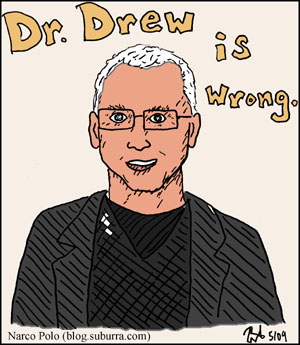 Dr. Drew Pinsky frequently enjoyed cocaine while working at the LA radio station, KROQ, in the early 1980s. This was asserted by two of his former KROQ co-workers earlier this year in this article,
Dr. Drew Pinsky frequently enjoyed cocaine while working at the LA radio station, KROQ, in the early 1980s. This was asserted by two of his former KROQ co-workers earlier this year in this article, 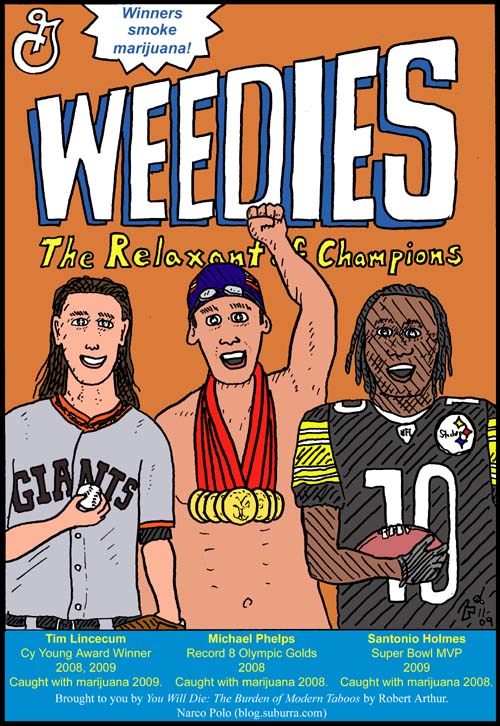
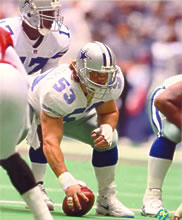 Mark Stepnoski (pictured) played 13 seasons in the NFL as a center winning two Super Bowls and going to five pro bowls. He smoked marijuana throughout his college and professional career saying, “To me it’s all about responsibility. There’s a time and a place for everything.”
Mark Stepnoski (pictured) played 13 seasons in the NFL as a center winning two Super Bowls and going to five pro bowls. He smoked marijuana throughout his college and professional career saying, “To me it’s all about responsibility. There’s a time and a place for everything.”